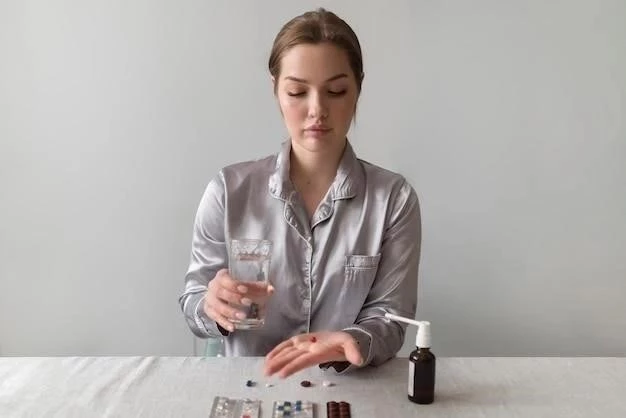

Understanding Tamoxifen and the Need for Alternatives
Tamoxifen‚ a common breast cancer treatment‚ offers significant benefits but also carries potential side effects. Exploring alternatives is crucial for personalized care‚ considering individual responses and risk factors. Understanding these options empowers informed decisions with your oncologist.
Why Consider Alternatives to Tamoxifen?
While Tamoxifen is a cornerstone treatment for hormone-receptor-positive breast cancer‚ individual responses vary significantly. Some women experience intolerable side effects‚ such as hot flashes‚ vaginal dryness‚ or menstrual irregularities‚ impacting their quality of life. Furthermore‚ Tamoxifen’s effectiveness differs among individuals; some cancers may not respond as well‚ necessitating alternative approaches for optimal treatment outcomes. The emergence of newer therapies‚ like aromatase inhibitors and CDK4/6 inhibitors‚ offers enhanced efficacy and potentially fewer side effects for specific patient populations. A personalized approach‚ guided by your oncologist‚ ensures the selection of the most suitable treatment strategy based on your unique characteristics and cancer profile. This consideration of alternatives is vital for maximizing therapeutic benefits and minimizing potential adverse effects.
Side Effects of Tamoxifen⁚ A Comprehensive Overview
Tamoxifen‚ while effective‚ can cause various side effects. Commonly reported are hot flashes‚ night sweats‚ and vaginal dryness‚ often impacting a woman’s comfort and daily life. Some individuals experience menstrual irregularities‚ including changes in bleeding patterns or amenorrhea. Less frequent but potentially serious side effects include blood clots (deep vein thrombosis or pulmonary embolism)‚ an increased risk of uterine cancer‚ and changes in lipid profiles. Less common side effects can involve nausea‚ vomiting‚ or changes in mood. The severity and frequency of these side effects vary greatly among individuals. Open communication with your healthcare team is crucial to manage these side effects effectively and to weigh the benefits of Tamoxifen against the potential risks. Regular monitoring and proactive management strategies can help mitigate discomfort and ensure patient well-being throughout treatment.
Identifying Suitable Candidates for Tamoxifen Alternatives
Several factors influence the decision to consider Tamoxifen alternatives. Intolerable side effects‚ such as severe hot flashes or blood clots‚ necessitate a change in treatment strategy. Patients whose tumors show resistance to Tamoxifen‚ indicated by disease progression during therapy‚ are also prime candidates for alternative treatments. Pre-menopausal women may benefit from alternatives due to Tamoxifen’s potential effects on the menstrual cycle and fertility. Furthermore‚ a patient’s overall health‚ including other pre-existing conditions‚ influences the selection of a suitable therapy. A comprehensive evaluation‚ involving detailed medical history‚ tumor characteristics‚ and individual preferences‚ is crucial in determining whether an alternative to Tamoxifen provides a better risk-benefit profile. The decision-making process should always involve close collaboration between the patient and their oncologist to personalize treatment.
Exploring Effective Tamoxifen Alternatives
This section explores promising alternatives to Tamoxifen‚ including aromatase inhibitors‚ SERMs like Raloxifene‚ SERDs such as Fulvestrant‚ and newer agents like CDK4/6 inhibitors. Careful consideration of individual factors is key for optimal treatment selection.
Aromatase Inhibitors⁚ A Detailed Examination
Aromatase inhibitors (AIs) represent a significant class of Tamoxifen alternatives‚ particularly effective in postmenopausal women. Unlike Tamoxifen‚ which acts as a selective estrogen receptor modulator‚ AIs directly prevent the production of estrogen in the body. This targeted approach can lead to improved efficacy in reducing tumor growth and recurrence. Common AIs include Anastrozole‚ Letrozole‚ and Exemestane‚ each with its own pharmacokinetic profile and potential side effects. While generally well-tolerated‚ AIs can cause musculoskeletal symptoms such as joint pain and stiffness. Other potential side effects include hot flashes‚ fatigue‚ and increased cholesterol levels. The choice among different AIs often depends on factors such as individual patient characteristics‚ previous treatments‚ and the specific type of breast cancer. Careful monitoring and management of side effects are essential to maximize the benefits of AI therapy while minimizing potential discomfort.
Anastrozole‚ Letrozole‚ and Exemestane⁚ A Comparative Analysis
Anastrozole‚ Letrozole‚ and Exemestane‚ all aromatase inhibitors‚ share the common goal of suppressing estrogen production but differ in their mechanisms and side effect profiles. Anastrozole and Letrozole are generally well-tolerated‚ with similar efficacy rates in reducing breast cancer recurrence. Exemestane‚ a steroidal AI‚ may offer advantages in certain scenarios‚ but it also carries a slightly higher risk of side effects such as hot flashes and musculoskeletal issues. The choice among these three hinges on individual patient factors‚ such as pre-existing conditions and tolerance to specific side effects. Anastrozole’s once-daily dosage might be preferred for ease of administration‚ while Letrozole’s potentially milder side-effect profile could favor some individuals. Exemestane’s stronger estrogen-suppressing action may be beneficial for certain tumor types. Consultation with your oncologist is crucial to determine which AI best aligns with your specific needs and risk factors‚ ensuring the most effective and tolerable treatment plan.
Raloxifene⁚ A Selective Estrogen Receptor Modulator (SERM)
Raloxifene‚ another SERM‚ presents a valuable alternative to Tamoxifen‚ particularly for postmenopausal women. Unlike Tamoxifen‚ Raloxifene exhibits estrogen-like effects on bone‚ potentially reducing the risk of osteoporosis‚ a concern often associated with other anti-estrogen therapies. It also demonstrates a lower risk of uterine cancer compared to Tamoxifen‚ making it a favorable choice for some patients. However‚ Raloxifene’s effectiveness in preventing breast cancer recurrence might be slightly less pronounced than Tamoxifen’s. Common side effects include hot flashes‚ leg cramps‚ and thromboembolic events‚ though the incidence is generally lower than with Tamoxifen. The decision to use Raloxifene should be made in close consultation with your healthcare provider‚ considering factors such as your individual risk profile‚ bone health concerns‚ and preferences regarding potential side effects. A careful assessment of benefits versus risks is crucial for optimal patient care.
Fulvestrant⁚ A Selective Estrogen Receptor Downregulator (SERD)
Fulvestrant stands out as a distinct alternative to Tamoxifen‚ functioning as a selective estrogen receptor downregulator (SERD). Unlike SERMs like Tamoxifen‚ which only partially block estrogen’s action‚ Fulvestrant completely blocks estrogen signaling by degrading the estrogen receptor. This potent mechanism makes it highly effective in treating advanced or metastatic breast cancer‚ particularly in patients who have progressed on other endocrine therapies. Fulvestrant is administered via injection‚ and common side effects include injection site reactions‚ fatigue‚ and hot flashes. Due to its potent mechanism and potential side effects‚ Fulvestrant is typically reserved for patients with advanced or recurrent disease who haven’t responded well to other endocrine therapies. Careful consideration of individual patient factors and a thorough risk-benefit assessment are critical before initiating treatment with Fulvestrant. Your oncologist will guide you through this decision-making process to ensure the best treatment strategy for your specific circumstances.
Other Treatment Strategies and Considerations
Beyond endocrine therapies‚ other treatment options exist for breast cancer‚ including targeted therapies like CDK4/6 inhibitors‚ chemotherapy‚ and ovarian ablation. These approaches may be used alone or in combination.
CDK4/6 Inhibitors⁚ A Promising New Class of Drugs
CDK4/6 inhibitors represent a significant advancement in breast cancer treatment‚ offering a targeted approach to combatting tumor growth. These drugs specifically target cyclin-dependent kinases 4 and 6 (CDK4/6)‚ enzymes crucial for cell cycle progression. By inhibiting CDK4/6 activity‚ these agents effectively halt the proliferation of cancer cells. Palbociclib‚ Ribociclib‚ and Abemaciclib are examples of CDK4/6 inhibitors currently approved for use in various stages of hormone-receptor-positive breast cancer. They’re often used in combination with endocrine therapy‚ such as aromatase inhibitors or Fulvestrant‚ to enhance treatment effectiveness. While generally well-tolerated‚ common side effects include neutropenia (low white blood cell count)‚ fatigue‚ nausea‚ and diarrhea. Careful monitoring of blood counts and proactive management of side effects are essential during treatment with CDK4/6 inhibitors. The use of these agents is usually determined on a case-by-case basis‚ considering individual patient characteristics and the specific cancer profile.
Palbociclib‚ Ribociclib‚ and Abemaciclib⁚ Understanding Their Roles
Palbociclib‚ Ribociclib‚ and Abemaciclib are three distinct CDK4/6 inhibitors‚ each with a unique role in the management of hormone-receptor-positive breast cancer. While all three target CDK4/6 to inhibit tumor growth‚ they differ in their administration schedules and side effect profiles. Palbociclib‚ for instance‚ is often administered in a cyclical manner‚ allowing for periods of rest to mitigate the risk of neutropenia. Ribociclib and Abemaciclib‚ on the other hand‚ have different dosing schedules and may present slightly different toxicity profiles. The selection among these three agents depends on various factors‚ including the patient’s overall health‚ the presence of other medical conditions‚ and the stage of their disease. Furthermore‚ the choice is often guided by prior treatment responses and potential drug interactions. Your oncologist will carefully consider these factors to determine which CDK4/6 inhibitor offers the best balance of efficacy and tolerability for your individual circumstances. Close monitoring and prompt management of side effects are crucial throughout the treatment course.
Chemotherapy and Targeted Therapies⁚ When to Consider Them
Chemotherapy and targeted therapies represent alternative approaches to treating breast cancer‚ each with its own specific indications and considerations. Chemotherapy involves using cytotoxic drugs to destroy cancer cells. It may be employed in cases where cancer has spread beyond the breast or in situations where endocrine therapies or other targeted treatments are not deemed suitable. Common side effects of chemotherapy include nausea‚ vomiting‚ hair loss‚ and fatigue. Targeted therapies‚ on the other hand‚ are designed to target specific molecules or pathways involved in cancer growth. Examples of targeted therapies include trastuzumab for HER2-positive breast cancer and olaparib for BRCA-mutated breast cancer. The decision to use chemotherapy or targeted therapy depends on various factors‚ including the stage and type of breast cancer‚ the patient’s overall health‚ and the potential risks and benefits of each treatment option. Your oncologist will thoroughly discuss these considerations with you to determine the most appropriate treatment strategy for your individual circumstances.
Ovarian Ablation and its Implications
Ovarian ablation is a procedure that involves the surgical removal or radiation treatment of the ovaries. It is occasionally considered as an alternative approach to endocrine therapy for premenopausal women with hormone-receptor-positive breast cancer. By eliminating the ovaries’ production of estrogen‚ ovarian ablation can mimic the effects of endocrine therapy. However‚ it also induces menopause and its associated symptoms‚ such as hot flashes‚ vaginal dryness‚ and mood changes. Furthermore‚ ovarian ablation may have long-term implications for fertility and bone health. The decision to pursue ovarian ablation should be carefully weighed against its potential benefits and risks. Your oncologist will thoroughly discuss these factors with you to determine if it is the most suitable option for your individual circumstances and treatment goals.

Lifestyle Modifications and Supportive Care
Alongside medical treatments‚ lifestyle modifications and supportive care play a vital role in managing breast cancer and its side effects.
The Role of Diet and Nutrition in Breast Cancer Management
Maintaining a well-balanced diet is crucial for overall health‚ including during breast cancer treatment. Eating plenty of fruits‚ vegetables‚ and whole grains provides essential vitamins‚ minerals‚ and antioxidants that can support your body’s natural defenses. Limiting processed foods‚ sugary drinks‚ and unhealthy fats helps reduce inflammation and promote overall well-being. Adequate protein intake is also important for maintaining muscle mass and supporting tissue repair. Staying hydrated by drinking plenty of water is vital for flushing out toxins and supporting overall bodily functions. While specific diets have not been proven to prevent or cure breast cancer‚ a healthy and balanced diet can contribute to your overall health and well-being during treatment.
Exercise and Physical Activity⁚ Benefits and Recommendations
Regular exercise is highly recommended for people with breast cancer. Engaging in physical activity can help reduce fatigue‚ improve mood‚ and maintain a healthy weight. Exercise can also strengthen your immune system and improve your overall sense of well-being. Aim for at least 150 minutes of moderate-intensity exercise or 75 minutes of vigorous-intensity exercise per week. Choose activities that you enjoy and that fit into your lifestyle. If you’re new to exercise‚ start slowly and gradually increase the intensity and duration of your workouts. It’s also important to listen to your body and rest when you need to.
Stress Management Techniques and Their Impact
Managing stress is an important part of breast cancer care. Stress can take a toll on your physical and emotional health‚ making it more difficult to cope with treatment and recovery. Finding healthy ways to manage stress can help improve your overall well-being and quality of life. Some effective stress management techniques include relaxation exercises‚ such as deep breathing and meditation; physical activity; spending time in nature; and connecting with loved ones. Consider seeking professional help from a therapist or counselor if you’re struggling to manage stress on your own.
Importance of Regular Medical Check-ups and Monitoring
Regular medical check-ups and monitoring are crucial for managing breast cancer and assessing the effectiveness of your treatment plan. Your doctor will schedule follow-up appointments to monitor your progress‚ check for any side effects‚ and make any necessary adjustments to your treatment. These appointments may include physical exams‚ blood tests‚ imaging tests‚ and other procedures. It’s important to attend all of your scheduled appointments and to report any new or worsening symptoms to your doctor promptly. Open communication and adherence to your follow-up plan are essential for ensuring the best possible outcomes.
Making Informed Decisions About Treatment
Open communication and collaboration with your healthcare team are paramount for making informed decisions about your breast cancer treatment.
Consulting with Your Oncologist⁚ The Importance of Personalized Care
When making treatment decisions‚ it is essential to have open and ongoing communication with your oncologist. They are the experts who can provide you with the most up-to-date information about your condition and the available treatment options. Your oncologist will work with you to develop a personalized treatment plan that takes into account your individual needs and preferences. They will consider factors such as the stage and type of your cancer‚ your overall health‚ and your personal goals and values. Throughout your treatment‚ your oncologist will monitor your progress and make adjustments to your plan as needed. By working together with your oncologist‚ you can make informed decisions about your care and ensure that you receive the best possible treatment.
Weighing the Benefits and Risks of Each Alternative
When considering different treatment options‚ it is important to carefully weigh the potential benefits and risks of each one. This involves understanding how effective the treatment is‚ what side effects it may cause‚ and how it might impact your overall quality of life. Your oncologist can help you assess the evidence and make an informed decision about which treatment is right for you. It is also important to consider your personal values and preferences when making this decision. Some people may prioritize the chance of a cure‚ while others may place more emphasis on minimizing side effects or preserving their quality of life. Ultimately‚ the best treatment decision is the one that aligns with your individual goals and circumstances.
Understanding Clinical Trial Participation
Clinical trials are research studies that evaluate new and promising cancer treatments; Participating in a clinical trial can give you access to the latest treatments and potentially improve your chances of a successful outcome. However‚ it is important to understand the risks and benefits of clinical trials before making a decision about whether or not to participate. Your oncologist can discuss the available clinical trials with you and help you decide if one is right for you. If you choose to participate in a clinical trial‚ you will be closely monitored by the study team and will have the opportunity to ask questions and receive support throughout the process.
Long-Term Follow-up and Management
After completing treatment for breast cancer‚ it is important to continue with regular follow-up appointments with your oncologist. These appointments will allow your doctor to monitor your recovery‚ check for any signs of recurrence‚ and make any necessary adjustments to your treatment plan. Long-term follow-up care may also include mammograms‚ blood tests‚ and other imaging tests to monitor your overall health and well-being. By following your doctor’s recommendations for follow-up care‚ you can increase your chances of a successful long-term outcome.

